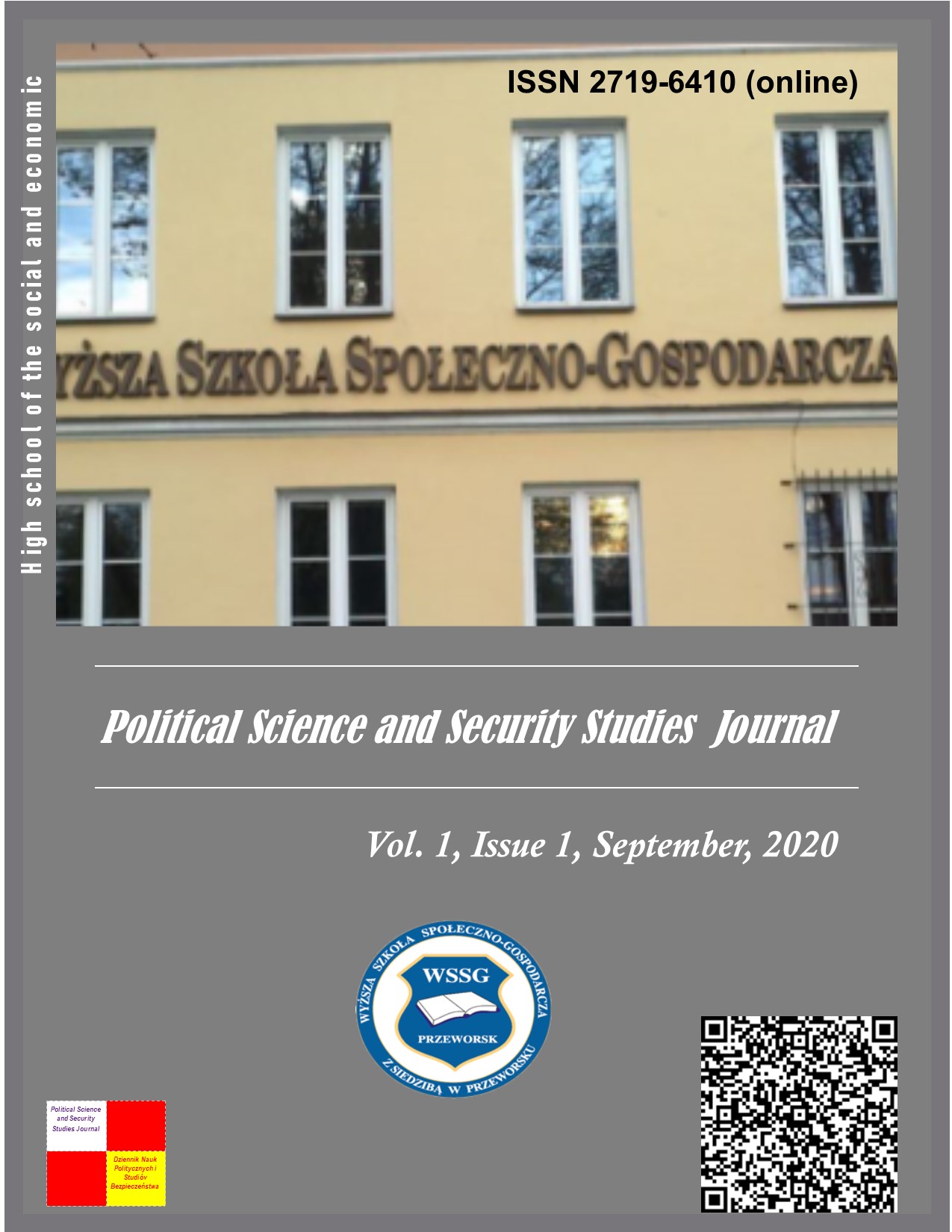Methodological foundations of technical justification of indicators and criteria for evaluation the efficiency of radar complexes for detecting explosive devices with non-contact target sensors
DOI:
https://doi.org/10.5281/zenodo.4281320Keywords:
search and detection of explosive devices, explosive device with non-contact target sensor, nonlinear detection method, remotely controlled radiolocation complex, factor spaceAbstract
Cardinal changes of the character and significant increase of the dynamics of mine warfare in modern military conflicts became a result of shifting priorities towards the use of the latest models of mines and improvised explosive devices with non-contact target sensors. Such a state of the issue raised exacerbation of the problem of countering explosive threats and the need to ensure the required level of efficiency, safety, and cost of search processes and detection of explosive devices with non-contact (electronic) target sensors. Existing technical means of search and detection of explosive devices, as a rule, mostly based on the use of active electromagnetic methods.
It is established that almost all non-contact target sensors are united by a common feature – the presence of semiconductor elements in their composition, or their transitions such as metal-oxide-metal. Specified peculiarity lies in the basis of modern means of detecting explosive devices with non-contact target sensors with the method of nonlinear radiolocation. However, the requirements for the safety of using search devices of this type in the manual version or on land vehicles still remain problematic. One way how to resolve this contradiction is to install search systems on the remote-controlled platform. In this case require an urgent need for technical justification of the requirements if the conditions and methods of their application are changing.
The methodical bases of construction of factor space for the further definition of indicators and criteria an estimation efficiency of functioning remotely controlled radar complexes of detection explosive devices with noncontact target sensors are discussed.
Downloads
References
Carin, L., Geng, N., & McClure, M. (1999). Ultra-wide-band synthetic-aperture radar for mine-field detection. IEEE Antennas and Propagation Magazine, 41(1), 18-33.
Daniels, D. (2004). Ground Penetrating Radar. Stevenage, UK: The Institution of Engineering and Technology.
Ekzamenuet «goryachaya tochka». Armejskij sbornik, (1), 34-38.
Furuta, K., & Ishikava, J. (2009). Anti-Personnel Landmine Detection for Humanitarian Demining. The Current Situation and Future Direction for Japanese Research and Development. London: Springer-Verlag London, Ltd.
Grinev, A. Y. (2005). Voprosy` podpoverxnostnoj radiolokacii. Moskva: Radiotexnika.
IMAS 07.12 Menedzhment kachestva v protivominnoj deyatel`nosti. (2001). New York: UNMAS. Retrieved from https://www.mineactionstandards.org/fileadmin/user_upload/translations/IMAS_07.12_Quality_management_in_mine_action__draft_Ed._1__RU_02.pdf.
Jol, H., (2008). Ground Penetrating Radar Theory and Applications. Amsterdam: Elsevier.
LANDMARC: Making Land-Mine Detection and Removal Practical. Science & technology review, (11), 18-21. Retrieved from https://str.llnl.gov/content/pages/past-issues-pdfs/1997.11.pdf.
Mashiny inzhenernogo vooruzheniya. Chast І. (1986). Moskva: Voenizdat.
Nizhalovs`kij, A. M. (1999). Minnaya vojna v Abxazii. Armejskij sbornik, (1), 26-29.
Salamaxin, T. M. (1983). Boevaya e`ffektivnost inzhenerny`x boepripasov i e`lementov sistemy` zagrazhdenij. 1983: Moskva VIA imeni KUjby`sheva.
Shherbakov, G. N. (2011). Novy`e metody obnaruzheniya skry`ty`x ob`ektov: monografiya. Moskva: OOO El`f IPR.
Svirskyi, S. (2003). Livan: misiia tryvaie. Viisko Ukrainy, (3), 4-7.
Taylor, J. (2012). Ultrawideband Radar. Application and Design. Boca Raton, London, New York: CRC Press Taylor & Francis Group.
Tursunxodzhaev, X. A., Suxarevskij, O. I., Zalevskij, G. S., Pivovar, A. V., Muzy`chenko, A. V., & Feshhenko, K. B. (2002). Sverxblizhnyaya radiolokaciya podpoverxnostny`x ob`ektov. Osnovny`e napravleniya i perspektivy` razvitiya. Prikladnaya radioe`lektronika, 1(1), 5-14.
Vajnberg, D., & Shumeker, D. (1979). Statistika. Moskva: Statistika.
Zhukov, N. K. (1990). Sredstva minirovaniya armij stran NATO. Zarubezhnoe voennoe obozrenie, (6), 20-27.
Zhukov, S. (1998). Opy`t razminirovaniya mestnosti v usloviyax lokal`ny`x voenny`x konfliktov. Zarubezhnoe voennoe obozrenie, (6), 14-19.
Published
How to Cite
Issue
Section
License
The authors agree with the following conditions:
1. Authors retain copyright and grant the journal right of first publication (Download agreement) with the work simultaneously licensed under a Creative Commons Attribution License that allows others to share the work with an acknowledgment of the work's authorship and initial publication in this journal.
2. Authors have the right to complete individual additional agreements for the non-exclusive spreading of the journal’s published version of the work (for example, to post work in the electronic repository of the institution or to publish it as part of a monograph), with the reference to the first publication of the work in this journal.
3. Journal’s politics allows and encourages the placement on the Internet (for example, in the repositories of institutions, personal websites, SSRN, ResearchGate, MPRA, SSOAR, etc.) manuscript of the work by the authors, before and during the process of viewing it by this journal, because it can lead to a productive research discussion and positively affect the efficiency and dynamics of citing the published work (see The Effect of Open Access).















